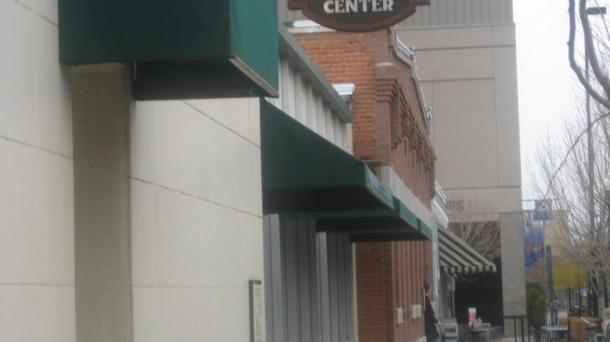news
Basques around the world
Boise's Basque Museum, key to maintaining Basque culture in USA
Igor Lansorena
eitb.com
First established in 1985 by a woman of Basque heritage, the Basque Museum and Cultural Center in Boise, Idaho, provides an active central location for maintaining Basque culture in the United States.
-

Boise's Basque museum. Photo. EITB
Who Basque people are or the mystery of their origins are two questions that many renowned ethnographers have tried to answer in vain. Many say the Basques were in the Iberian Peninsula before the Roman invasion; others, that they came from Scotland or the Caucasus.
The Basque Museum and Cultural Center, the only Basque museum in the United States, does not hold the answer to this question. However, they try to give visitors at least a hint of who the Basques are, what they are like, why they migrated to the United States, and to provide an insight into the heritage of the Basque communities of Idaho and the surrounding areas.
Located in Boise, capital of the state of Idaho and the hub of where Basque immigrants first congregated after coming to the United States, the Basque Museum Center provides an active central location for maintaining the Basque culture in the United States.
It was first established in 1985 as a small museum in the historic Cyrus Jacobs-Uberuaga House at 607 Grove Street thanks to Adelia Garros, a woman of Basque heritage involved with the Historical society and interested in preserving historical buildings. The reason for the establishment of the museum was to "educate non-Basques about the Basque people, and to try to preserve some of our history", Patty Miller, director of the Basque Museum, recounts.
Thanks to Adelia and others, the 611 Grove Street property became the primary facility for the Museum's operations in 1985. As artifact donations and exhibit development increased, so did the need for more space. Displays, classrooms, a library, a kitchen and a museum store became part of the renewed space.
"We started having more classes and things over here, and we moved the gallery and the main activities over to this larger building. It is really due to her that so many of these buildings are still here on the Basque block and there is no doubt that there would be no Basque museum without her efforts", Patty Miller says when talking about Adelia.
Cultural Center
As well as a museum, it is also a cultural center and a meeting place for events and educational opportunities in which people of all backgrounds can participate in Basque activities.
It organizes Basque language classes, presentations, is responsible for the Boiseko Ikastola program and convenes open-air activities or entertaining activities such as the San Inazio Basque picnic or the Basque Museum Winefest.
It is also an archive gathering important collections that include oral history archives, a library, a records / tapes collection, manuscript materials, numerous artifacts and photographs and home of significant resources for anyone interested in Basque history and culture.
"This is an area which I hope we can move forward and really expand in the next few years. We are very fortunate to have quite a large backlog of oral history tapes and then we have the script collection of Juanito Ormaechea’s books, which we just started to digitize", Patty Miller recounts.
"Between 13000 and 15000 thousand people come to the Museum every year for classes and presentations", she adds.
Traveling exhibitions
Although still a small and relatively young museum, the Basque Museum has already had the chance to work with other museums in the Basque Country and take part in some remarkable events.
"The lehendakari planted the old tree in 1988. In 1995 we were able to produce a CD of Basque music. In 1996 or 97 we received the scrapbooks of Juanito Hormaechea, who had spent years of his life collecting photographs and all sorts of information, newspapers. In 2000 the work on the Basque block was a huge effort: the sculptures, the laiak, the first time that something in Euskera was written outside, the mural on the Basque block," Patty Miller remembers.
Besides, the Basque Museum is one of the driving forces behind each Jaialdi, a large Basque festival held in Boise every five years bringing thousands of visitors from all over the world to the city.
"We are working for an exhibition about pilota to come here for Jaialdi. That will be something we will continue to work on and hopefully will able to do more of. I can foresee that we will be working with several museums. I can see a lot of potential for the future," the museum's director says.
As a small and private non-profit museum, the Basque Museum and Cultural Center does not receive funding from the City of Boise or the State of Idaho. It receives grants to work on certain projects but it is not usually to keep the center going, so the Museum usually has to redouble is efforts to make it year's end: "funds from memberships, sales from the museum's store, funds from the Cenarrusa Foundation, our own fundraisers, the tuition the parents pay for their children’s studies in the Ikastola, grant funds from the Basque Government to cover the costs of teachers for the ikastola," Patty says.
top stories



-
news
New anti-eviction law
Andalucia begins proceedings to seize confiscated houses from banks
-
news
London attack
British police ponder conspiracy after soldier murder
-
Sport
Giro d'Italia
Nibali tightens grip on overall lead after stage victory
© EITB - 2024 - Privacy Policy - Legal disclaimer - Cookie Policy - Cookie settings


